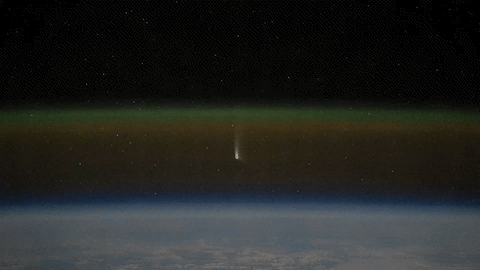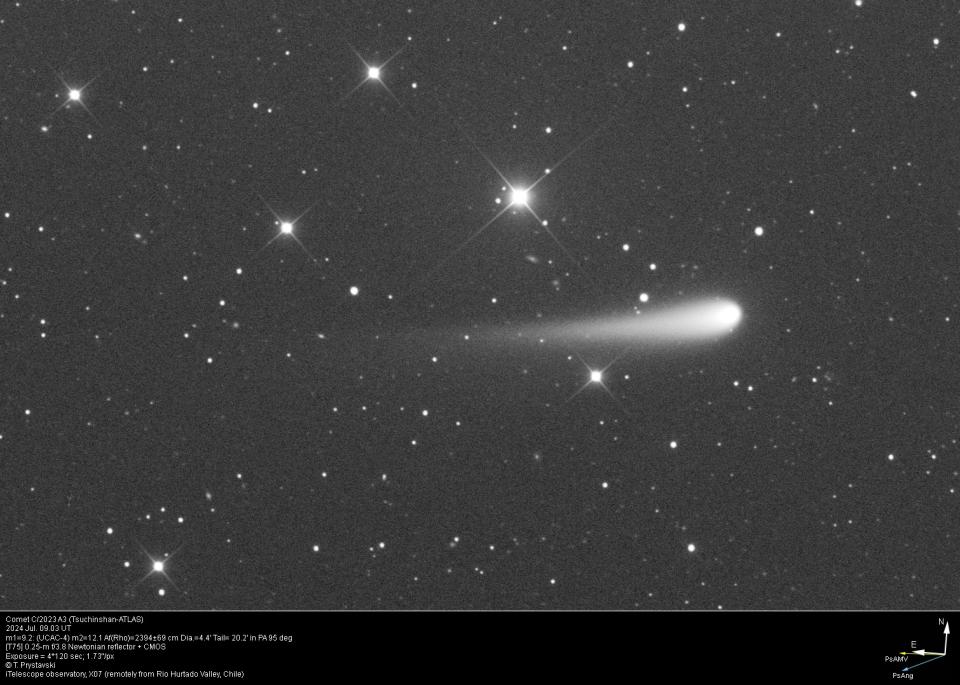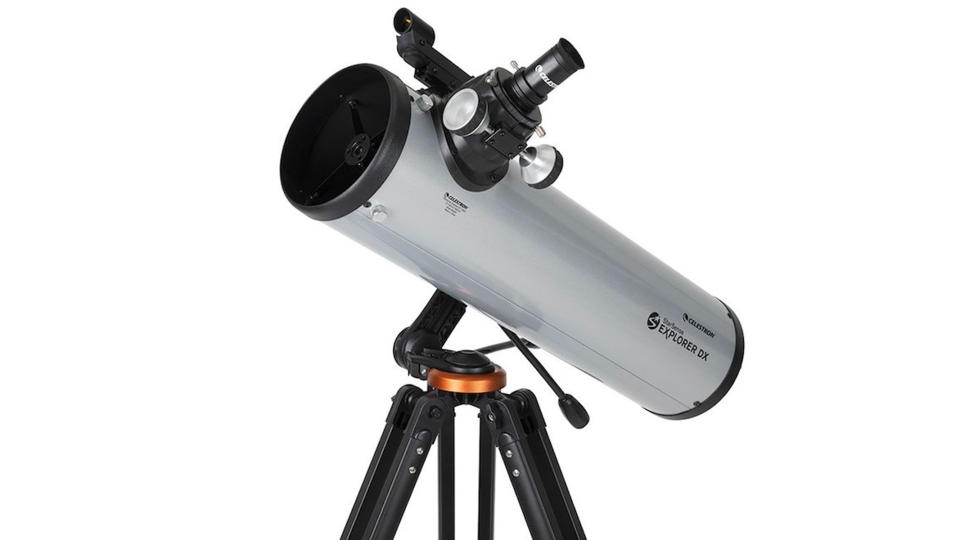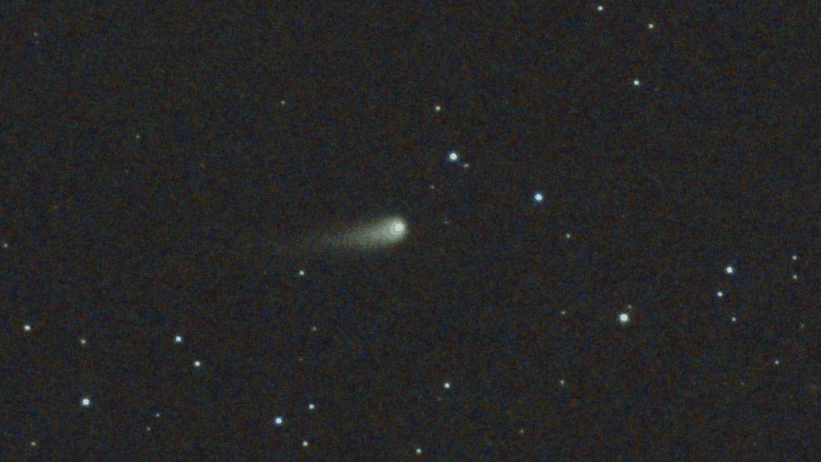When you buy through links on our articles, Future and its syndication partners may earn a commission.


A video filmed by NASA astronaut Matthew Dominick shows a rare glimpse of Comet Tsuchinshan-ATLAS as seen from the International Space Station.
The time lapse video shows the comet, designated C/2023 A3 Tsuchinshan-ATLAS seemingly hovering above Earth’s atmosphere as it makes its journey toward the sun.
“So far Comet Tsuchinshan-ATLAS looks like a fuzzy star to the naked eye looking out the cupola windows,” wrote Dominick, commander of the SpaceX Crew-8 mission, in a post on X. “But with a 200mm, f2 lens at 1/8s exposure you can really start to see it. This comet is going to make for some really cool images as it gets closer to the sun. For now a time lapse preview.”
Dominick has been releasing stunning astrophotography during his time aboard the International Space Station, capturing gorgeous views of auroras over Earth, meteors exploding in our atmosphere and star trails set against the structures of the ISS.
VIDEO NOT PLAYING?
Some ad blockers can prevent our video player from showing up at the top of this page.
His latest target, Tsuchinshan-ATLAS, was simultaneously discovered in 2023 by the Asteroid Terrestrial-impact Last Alert System (ATLAS) and Tsuchinshan Chinese Observatory (Purple Mountain Observatory of the Chinese Academy of Sciences).
Initially mistaken for an asteroid, C/2023 A3 (Tsuchinshan-ATLAS) was determined to be a small comet, a mere 0.6 to 1.2 miles (1-2 kilometers) across. The comet is traveling through our solar system in a retrograde orbit around the sun, meaning it moves in the opposite direction to most major objects, like planets and asteroids.
Comet Tsuchinshan-ATLAS is believed to originate from the Oort Cloud, a theorized region of space surrounding our solar system that has not yet been directly observed. It is believed to be a vast spherical shell of icy bodies, including comets, beyond Neptune’s orbit. The Oort Cloud is considered the source of long-period comets that travel into the inner solar system, and its existence helps explain the observed trajectories of these comets.


Excitement around C/2023 A3 (Tsuchinshan-ATLAS) has been building since its discovery because while a dim object initially, a year later it had brightened by several orders of magnitude, becoming bright enough to detect visually, though with some difficulty, through 15-inch or larger telescopes.
TOP TELESCOPE PICK:


Looking for a telescope to see comets in the night sky? We recommend the Celestron StarSense Explorer DX 130AZ as the best for basic astronomy in our best beginner’s telescope guide.
Throughout the rest of September and into October, Tsuchinshan-ATLAS has become brighter, with many astronomers, both amateur and professional, already posting photos of its flyby with its tail even visible in some images. Views have been restricted to the Southern Hemisphere, but as of Sept. 23, its path will curve northward, making it visible in the Northern Hemisphere into October.
There was previous skepticism as to whether the comet would put on a show for skywatchers, as a report published in July predicted that C/2023 A3 (Tsuchinshan-ATLAS) might actually disintegrate before it reaches perihelion, the closest point in its orbit to the sun with “evidence pointing to its forthcoming inevitable collapse.”
But to the delight of many, even as visibility has been diminished as the comet is lost in the sun’s glare, recent satellite images have confirmed that it has in fact remained intact.


This means some spectacular views during the second and third weeks of October, when it could become visible to the naked eye. On Oct. 9 in particular, its predicted that as it passes between Earth and sun, dust particles could scatter light bouncing off it that will cause a surge in the comet’s brightness, briefly making it as bright as Jupiter or even Venus!
Whatever happens, don’t miss this opportunity as C/2023 A3 (Tsuchinshan-ATLAS) won’t be back any time soon — possibly ever. Current projections predict its orbit will send the comet on a path to escape the solar system.
